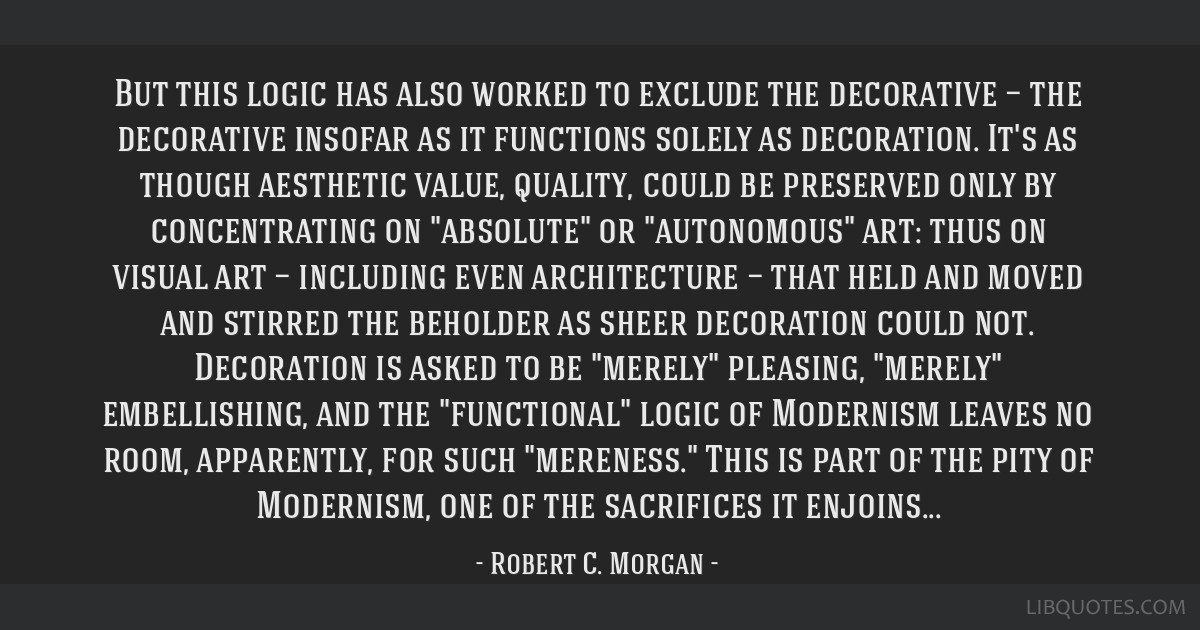But this logic has also worked to exclude the decorative — the decorative insofar as it functions solely as decoration. It's as though aesthetic value, quality, could be preserved only by concentrating on "absolute" or "autonomous" art: thus on visual art — including even architecture — that held and moved and stirred the beholder as sheer decoration could not. Decoration is asked to be "merely" pleasing, "merely" embellishing, and the "functional" logic of Modernism leaves no room, apparently, for such "mereness." This is part of the pity of Modernism, one of the sacrifices it enjoins...
Clement Greenberg, Robert C. Morgan in: Clement Greenberg, Late Writings in Detached Observations, University of Minnesota Press, 30 January 2007, p. 70























